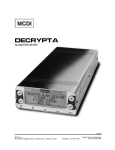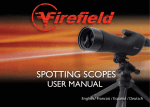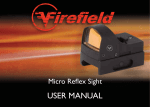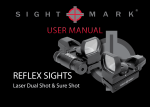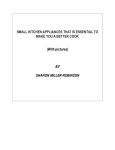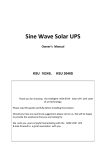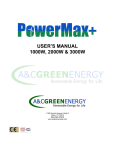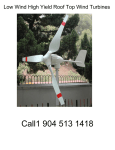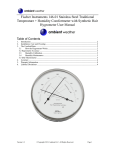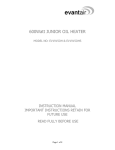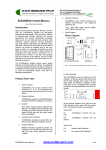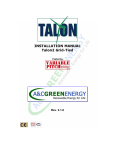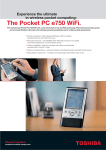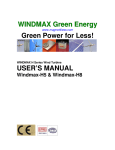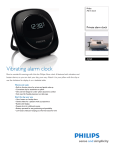Download USER`S MANUAL 400W and 600W
Transcript
USER’S MANUAL 400W and 600W 1108 Summit Avenue, Suite 8 Plano, TX 75074 866-WND-PWRD www.acgreenenergy.com CONTENTS 1. WIND TURBINE INTRODUCTION 2. SITING 3. CHOOSING A SUITABLE WIND TURBINE 4. YOUR WIND TURBINE ASSEMBLY 5. POWER GENERATING SYSTEM CONFIGURATION 6. DAILY MAINTENANCE 7. TROUBLE SHOOTING PLEASE ENSURE THAT THE EQUIPMENT IN THE CARTON IS FULLY MATCHED WITH THE PACKING LIST (REFER TO APPENDIX: WIND TURBINE STRUCTURE). CONTACT US IMMEDIATELY SHOULD THERE BE ANY PARTS MISSING. 1. WIND TURBINE INTRODUCTION BLADES: the rotor blades apply the latest advanced thermoplastic engineering and are manufactured by precision injection molding. The blades are of exceptional consistency and aerodynamic outline with a mass distribution that ensures the rotors operate with nearly no noise and minimal vibration. The wind turbine has a very low start-up/cut-in wind speed, a high coefficient of productivity and is specially designed to prevent the blades from feathering post stall. GENERATOR: made from high-quality rare earth permanent magnets. The wind turbine is small and light weight, but has high-efficiency power generation characteristics. Both mechanical and electrical engineers’ unique electromagnetic design technique has produced an excellent start-up capability, which effectively ensures the wind turbines can start producing energy in the gentlest of breezes. BODY: The wind turbine housing material is adopted from a high-quality aluminum alloy and features machine-precision stainless steel accessories, which are light weight. The model can be widely applicable to an ambient temperature from -25C (-13F) to 40C (104F), high humidity, sand and sea spray environment as well. With its easy installation and elegant design, the PowerMax+ Series will allow you to enjoy green energy in all-weather circumstances, while not detracting from your landscape. 2. SITING The location of your PowerMax+ is very important for peak power generation. The following siting information is a useful reference: There are two basic requirements for a good site: high average wind speed and low wind turbulence. 1. Higher average wind speeds generate more power. Higher wind = more power. The wind power is proportional to the cube (n3) of wind speed. For instance, the energy contained in the wind speed of 5m/s (~11mph) is approximately 2 times higher than wind speed of 4m/s (~9mph). 2. Choosing a site in either an unstable wind-flow region or in a serious turbulent-flow region will shorten the long-term operation of your wind turbine. Moreover, this serious turbulent flow not only causes destructive force to the wind turbine, but also dramatically reduces power generation of the wind turbine. Install the wind turbine as high as possible, since the higher locations have the greater wind speeds; the more stable the wind, the more stable the generated power. In flat areas, the recommended installation height for the wind turbine is no less than 8 m (~26ft) above ground level. Trees and buildings create wind flow barriers, whether downwind or upwind. These disrupted turbulent flow areas will add to instable power output from your wind turbine. If at all possible, avoid installing the wind turbine in these turbulent flow areas. Usually, a higher tower will place the PowerMax+ in a turbulent-free wind flow. The height of your tower should be 2m (~6ft) higher than the highest buildings within 100m (~100yds) radius. Furthermore, please obey local zoning and municipal regulations when choosing your site. 3. WIND TURBINE RECAP Your PowerMax+ wind turbine is designed for use in regions with varying climates. Now that you’ve carefully considered the resources of your surrounding environment to select a suitable product that has the best performance capabilities, and have selected a site with low turbulence and high wind, it’s time to get started producing your green energy! 4. YOUR WIND TURBINE ASSEMBLY WIND TURBINE ASSEMBLY DIAGRAM(BLADE AND HUB CONNECTION) 1. INSPECT THAT ALL PARTS ARE COMPLETE. 2. REMOVE THE HUB FROM CARTON. 3. REMOVE THE BLADES FROM CARTON. 4. FASTEN THE BLADES TO THE HUB. WIND TURBINE ASSEMBLE DIAGRAM(FLANGE CONNECTION) 1. REMOVE THE WIND TURBINE FROM CARTON 2. REMOVE THE CABLE COVER AND CONNECT THE CABLE'S THREE PHASE WIRE WITH WIND TURBINE THREE PHASE WIRE. 3. ATTACH THE CABLE COVER 4. RUN THE CABLE OUT THROUGH THE TOWER 5. ATTACHED THE FLANGE AND TOWER 6. FINISH ASSEMBLY AND ERECT THE POLE. WIND TURBINE ASSEMBLY DIAGRAM(REDUCING JOINT CONNECTION) 1. CONNECT THE THREE PHASE WIRE WITH WIND TURBINE THREE PHASE WIRE 3. ATTACH THE UPPER COVER OF REDUCING JOINT THEN TIGHTEN 2. REMOVE THE REDUCING JOINT AND ATTACH IT TO THE WIND TURBINE AXLE 4. ATTACH THE LOWER COVER OF REDUCING JOINT THEN TIGHTEN 5. RUN ELECTRICITY CABLE THROUGH THE TOWER. 6. TIGHTEN THE COVER BY LOCKNUTS. WIND TURBINE ASSEMBLY DIAGRAM(HUB、FRONT COVER ASSEMBLE) 1. REMOVE THE FRONT COVER FROM CARTON. 2. ATTACH THE HUB (WITH BLADES) TO THE WIND TURBINE 3. TIGHTEN THE HUB WITH NUTS AND WASHER 4. ATTACH THE FRONT COVER ON HUB 5. POWER GENERATING SYSTEM CONGIFURATION According to your power consumption requirement, the following equipment can be configured for a typical power generation system. The wind turbine system's basic wiring: (2) The small wind turbine power generation system configuration: Controller:the wind turbine and controller should be connected to each other. Before erecting the tower, ensure the wind turbine is in shutdown mode by pressing the controller switch to the “off” position. After erecting the tower, connect and tighten the batteries and controller, THEN switch the controller to the “on” position. Inverter: for customers who need AC electricity, it is recommended to configure 200v (or 110v) 50HZ or (60HZ) control / inverter. Batteries: two 100AH/12V batteries are recommended for use with a 400Watt wind turbine, two 150AH/12V batteries are recommended for use with a 600Watt wind turbine. Negative pole of the battery needs to be grounded. Cables: wrong sized cables may cause electricity loss.. The following cable sizes are recommended for the three phase cable, which are configured for wind turbines: DISTANCE BETWEEN WIND TURBINE AND BATTERY (m) 〈 50 50—100 100—150 400W CABLE SIZE (mm2) 4 6 10 600W CABLE SIZE (mm2) 6 10 16 6. DAILY MAINTENANCE Your PowerMax+ wind turbine is a highly reliable design that is relatively maintenance-free, but routine inspections are still needed and suggested to ensure prolonged regular operation. 1. Inspect your tower’s guy wires; tighten loose cables, loosen tight cables. Check the guy rope tightness after three months of installation or in case of any big storm after. Cables that are too loose will cause the tower to sway and be instable. Cables that are too tight may cause the tower to bow and eventually collapse. 2. Inspect that all wiring is firmly fixed and free from corrosion. 3. Regularly inspect and maintain the batteries according to the battery manual. 4. In extremely bad weather (such as tornados), it is recommended to lower (lay down) the tower to prevent any injuries, accidents or equipment loss. 7. TROUBLE-SHOOTING PLEASE FIND CORRESPONDING SOLUTIONS BELOW IF ANY PROBLEM HAPPEN Problems Possible Reasons Correction 1. Loose steel guy wire 2. Loose blade-locknuts 3. Wind turbine blade damage 4. Imbalanced blade surface because of ice or debris on blade surface 1. 2. 3. 4. 1. Loose fixed part 2. Wind turbine bearing damage 3. Friction on wind turbine with another part 1. Lay down wind turbine, inspect each fastener and retighten 2. Change bearing 3. Remove obstruction Running speed decreased dramatically 1. Rotor friction 2. Controller switch on “stop” position 1. Change wind turbine 2. Press controller switch to "start" position Low output voltage from wind turbine 1. Wind turbine in low rotating speed 2. Controller fault 3. Long low-voltage transmission line, small diameter size cable 1. Low wind speed 2. Change controller 3. Shorten the transmission line or enlarge the cable diameter size No current output on wind turbine’s AC transmission line 1. Wind turbine short-circuit 2. Output cable short-circuit 1. Change wind turbine. 2. Re-bridge short-circuit Wind turbine AC output normal, but no DC output 1. AC fuse has burned out 2. Output cable short-circuit 3. Controller damage 1. Replace new fuse 2. Re-bridge short-circuit 3. Replace controller Battery output capability decrease 1. Wind turbine output voltage too low or not working 2. Acid corrosion on battery post 3. Battery not working 1. Check exclusively according to the above measures 2. Clean connection surface to ensure good contact, paint with protection oil. 3. Replace battery Wind turbine vibration Abnormal noise Adjust & tighten guyed rope Retighten the loose part Change new blade and rebalance Remove ice/debris from blade













